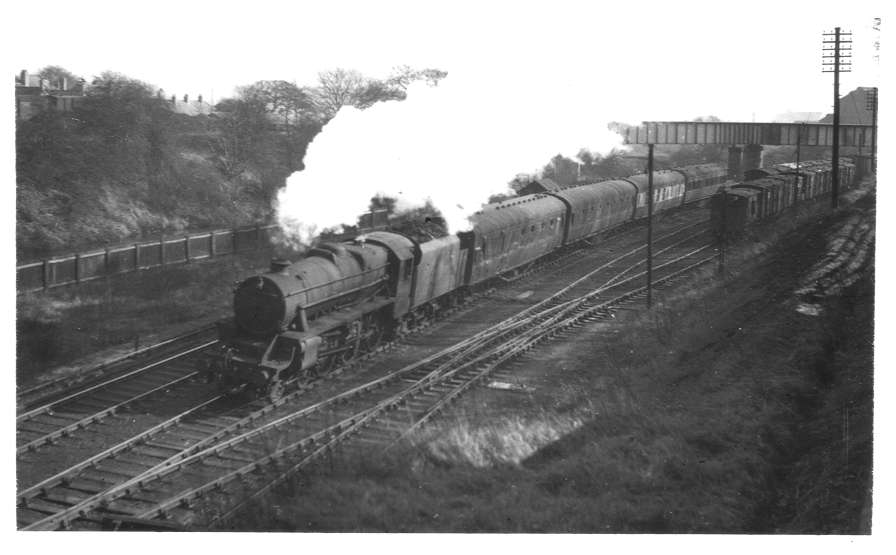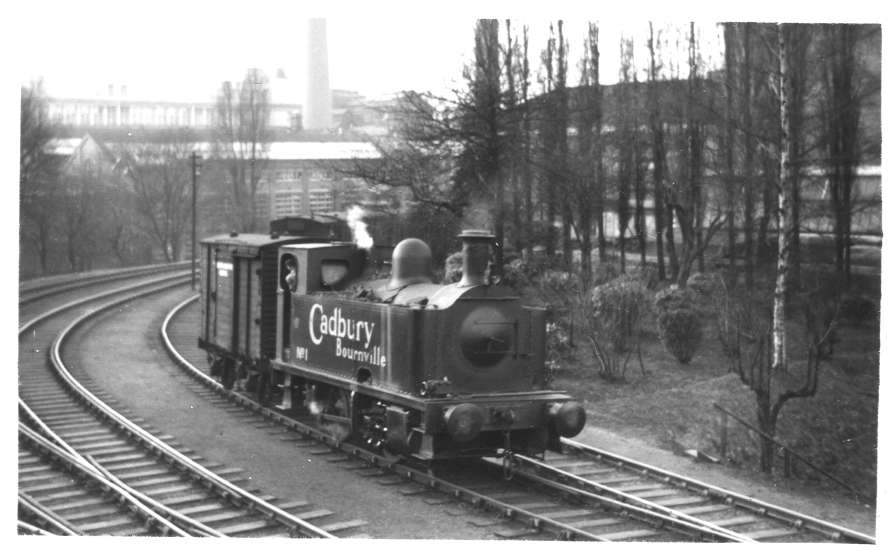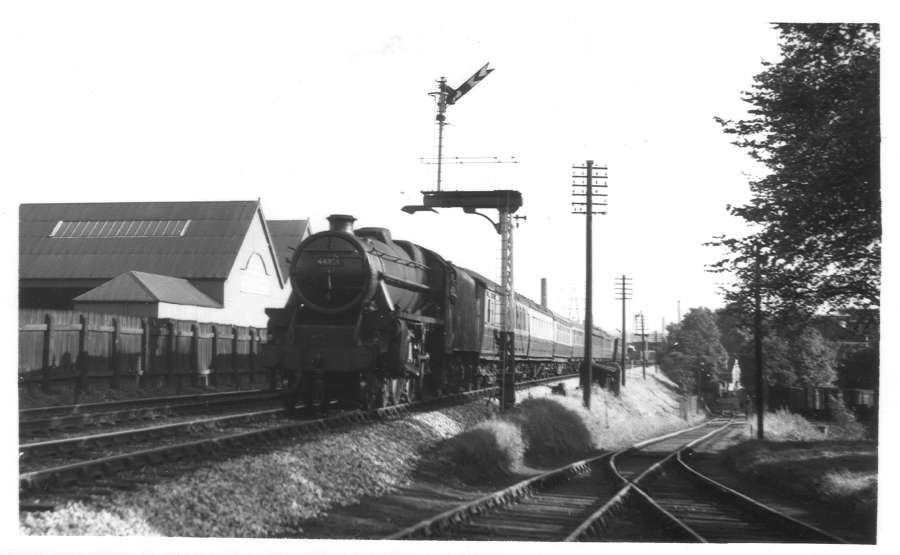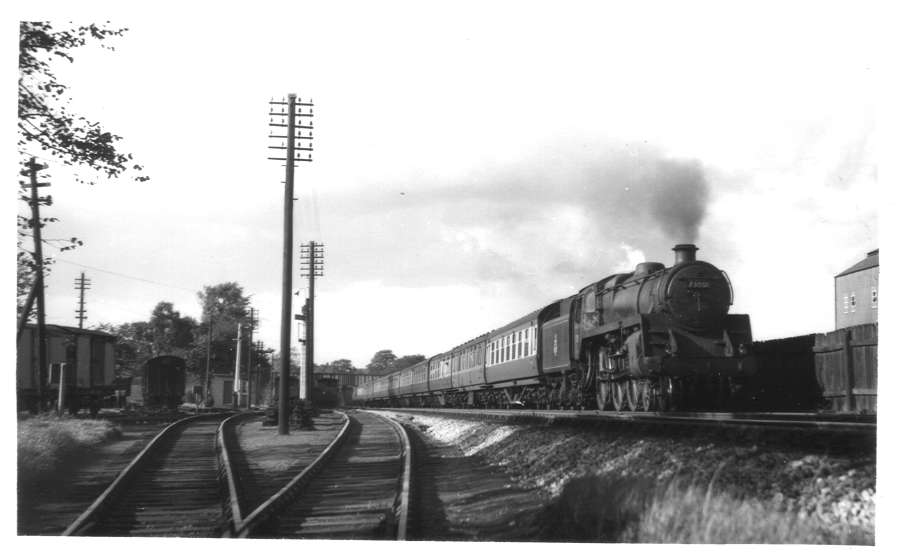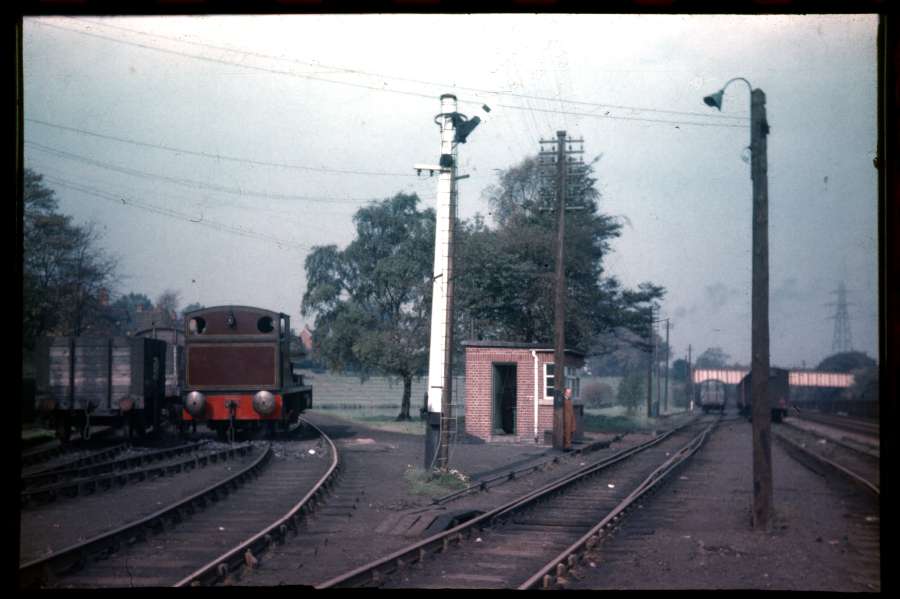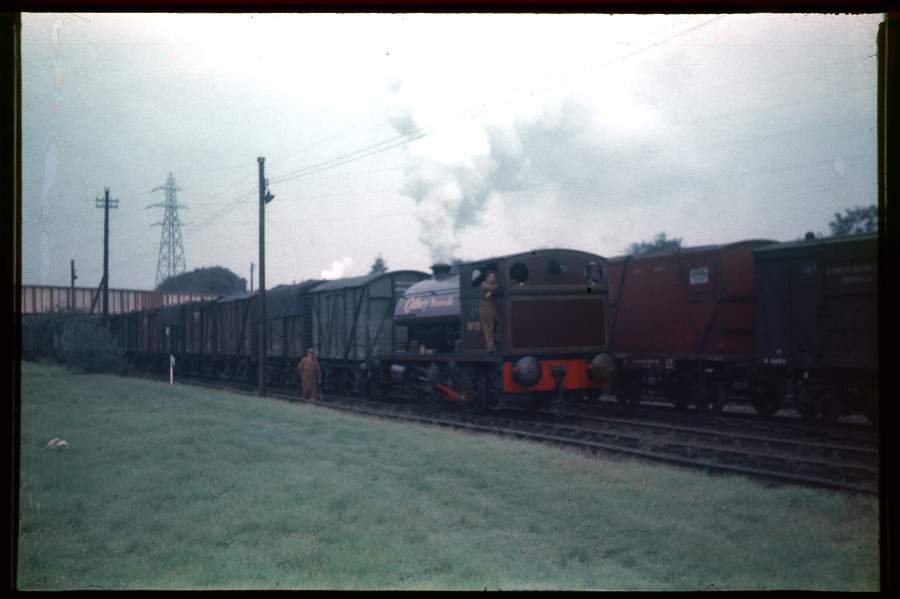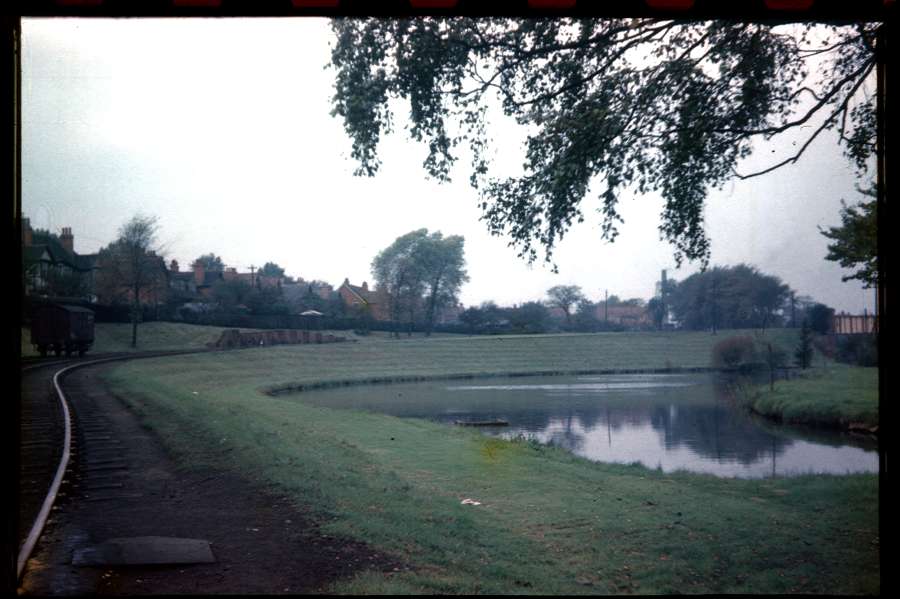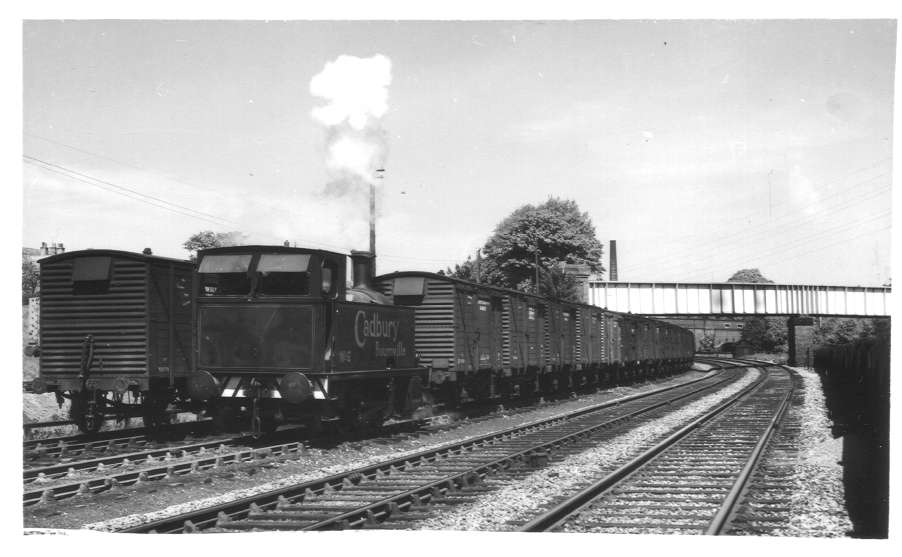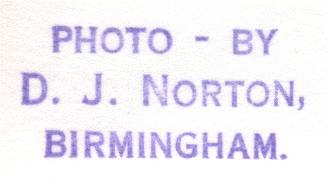
Cadbury Works Railway
The Cadbury works railway operated from 1884 until 1976. At its
peak, it incorporated six miles of track. Tight bends within the
factory complex meant that an 0-4-0 configuration was generally used
for loco's and the maximum wheelbase was 7ft 6in.
A bridge carried the railway over the main line and Worcester and
Birmingham
Canal to the Waterside warehouses. This bridge survives
to this day and provides a tangible link with the past. It also
features in six of the eight pictures below thus providing an excellent
reference point.
The pictures are all based around sidings that were parallel to the
main line between Bournville and Selly Oak. My father referred to
them as, "Cadbury's Sdgs".
Some of the facts quoted are taken from 'Bournville Steam &
Chocolate' by Mikes Hitches (Irwell Press, ISBN 1-871608-31-7).
This brief book is recommended although it should be noted that it is
not exclusively dedicated to the works railway but also covers the
development of the main line and station, information about the
Bournville Village created by the Cadbury family and also some details
about
Bournville Shed.
For more information, see the
MIAC Cadbury page and
Rail
Around Birmingham Cadbury Railway & Wharf page.
45273 Passing Cadbury's Sdgs Frame - 29/2/51
|
|
|
This photograph is very
interesting. 'Black Five' 45273 is heading towards Selly Oak from
Bournville on the old Birmingham West Suburban line. The two
tracks that formed the Cadbury's sidings can be seen starting to the
right of centre. As the two lines merge, a connection to the main
line is clear at the far left-hand corner of the picture. I
assume this is how wagons were transferred between the works railway
and the British Rail network. There also appears to be a buffer,
the top of which is just visible.
|
Cadbury No 1 Cadbury's Sdgs - 28/12/54
|
|
|
This is a
nice picture of Cadbury No. 1 heading from the factory towards the
sidings. This 0-4-0T loco was made by Avonside in 1925 and now
resides at the Birmingham
Railway Museum in Tyseley.
|
44878 Nr Bournville - 12/9/54
|
|
|
Another
'Black Five, 44878, steams from Bournville towards Selly Oak. On
the left are the warehouses of the Waterside complex. The single
track disappearing into the distance heads towards the Cadbury factory.
|
73001 Nr Bournville - 12/9/54
|
|
|
My father
has turned around after taking the picture directly above and is now
looking towards Selly Oak. The small hut associated with the
weighbridge shown below is visible towards the bottom left corner.
The loco is a 4-6-0 BR Standard 'Class 5' and had
been built in 1951. Thanks to Tom for pointing out that I had got
this loco confused with 72001!
|
Weighbridge Cadbury's Sdgs - 12/10/56
|
|
|
This colour
slide shows the weighbridge hut and the sidings more clearly. To
the right, the white bridge that linked the factory to Waterside is
obvious. I think the loco is probably No. 10, seen below.
|
Cadbury No 10 Cadbury's Sdgs - 12/10/56
|
|
|
Here is No.
10 in action. The 0-4-0 saddle tank was built by Pecketts in 1955
and was designed to be fired by coke thus running cleaner than coal
powered engines. As it was working in a food factory this was
obviously quite important and the whole Cadbury fleet were converted
for coke operation.
I noted that later pictures of this loco shown in Mike Hitches's book
show that the rear windows were elongated so I suspect visibility must
have been an issue with the original design.
|
Pool & Incline Cadbury's Sdgs - 12/10/56
|
|
|
This incline
provided a fairly gentle method to allow the Cadbury engines to tackle
the bridge to Waterside seen on the far right.
|
(Cadbury No 6 Cadbury's Sdgs) - 5/6/62
|
|
|
For some
reason this picture did not have a caption on the back so the caption
is mine rather than my father's.
No. 6 was another Avonside 0-4-0 side tank and had been built in
1923. The view is looking towards Selly Oak with the bridge to
Waterside once again prominent.
|



